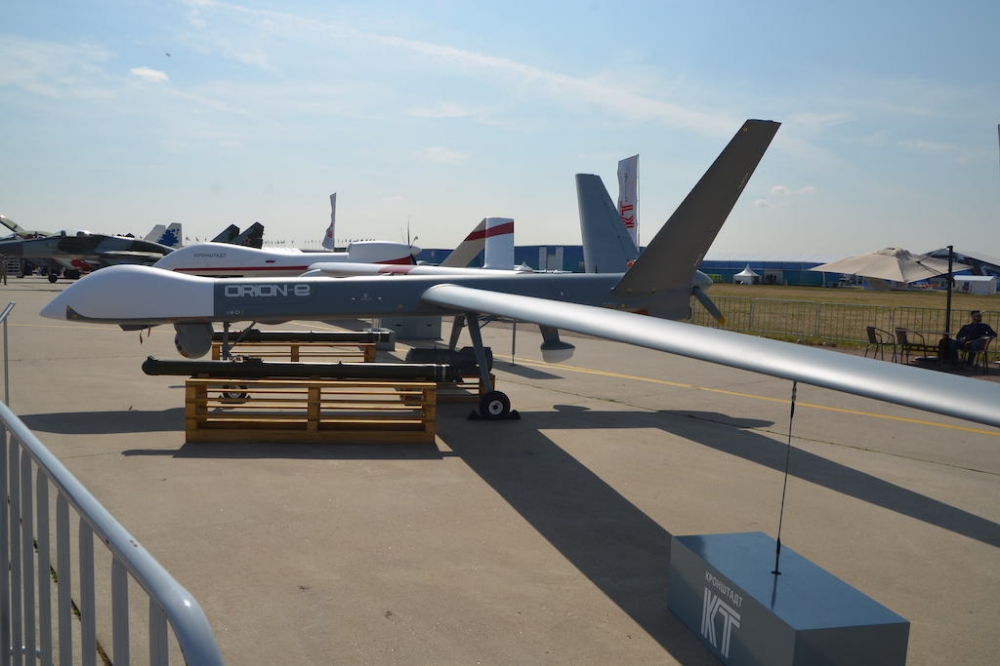Russia’s Kronshtadt has come to Dubai to demonstrate an exportable armed version of the Orion-E medium-altitude long-endurance unmanned combat air vehicle (MALE UCAV) outfitted with a satellite communications system (satcom) for control and data exchange.
First time on display outside the Commonwealth of Independent States, the drone has operated in the Arab world for several years, flying reconnaissance and, since 2019, strike missions in Syria.
Developed under the Inokhodets project, the version for the Russian armed services officially went into service last year. It differs from the exportable Orion-E on display in that it carries a larger inventory of air-launched munitions and the ability to operate as an element in the network-centric warfare system.
Moscow does not hide the drone’s combat employment in Syria against “terrorist squad” and “illegal armed bandits”—who regularly release videos depicting the Russian UAVs in the skies of the rebellious Idlib province—but shares details only with those interested in buying the product.
Rosoboronexport, the state arms exporter, has won “several export contracts…that are now being executed,” according to the company’s general director Aleksandr Mikheyev. All of them, however, call for delivery of an unarmed reconnaissance version, which won export clearance in 2017. The recently developed exportable strike variant carries a combat load of 200 to 250 kg (440 to 550 pounds), composed of 50 or 100 kg free-fall or guided bombs. Engineers have started work to expand the arsenal with the Vikhr-1V laser-guided anti tank missile.
Russia’s efforts to market armed drones started slowly, as other exporting nations took a lead position. “The global market for UCAVs is already well-populated…and highly competitive,” Mikheyev admitted. Apart from the popular U.S. and Israeli drones, the Russian product faces competition from Chinese UAVs, he said. And yet, Rosoboronexport expresses optimism about sales prospects for the Orion-E, praising its high performance.
The drone features fly-by-wire controls as well as a sleek fuselage and a high-aspect-ratio wing made completely of advanced composite materials for lower observability and weight saving. The 115-hp Rotax 914 piston engine used on initial production examples has given way to the indigenous APD-120 motor. The latter drives the AV-115 pushing propeller to accelerate the one-tonne drone to a top speed of 200 kph [108 knots].
The Orion-E can loiter for 24 hours at altitudes up to 23,000 to 26,000 feet. Due to a limitation of the radio relay equipment, the operational radius for the current production drones can’t exceed 250 km, but Kronshtadt offers overseas customers a satcom set to extend the figure.
The company promised the Russian defense ministry to deliver “at least six sets” of the Inokhodets system this year. Each one includes a control post on the platform of a standard army truck and three (maximum six) UCAVs. To increase production rates, Kronshtadt has begun building a new plant in Dubna, outside Moscow. Starting next year, it will produce “several dozen” UAVs annually for both local and overseas customers in military as well as civilian versions.
Photo: Vladimir Karnozov
Source: AIN

